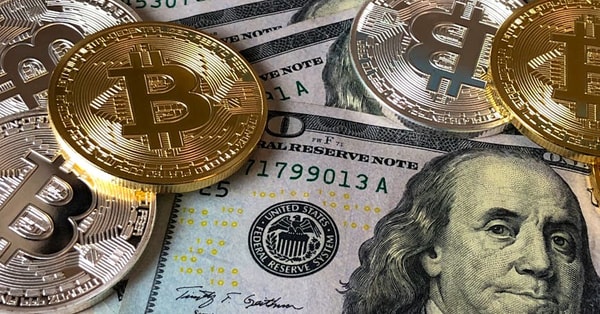Nordea Launches BTC-Linked Synthetic ETPs: A Sign of Crypto Maturity?
Nordea is launching Bitcoin-linked synthetic ETPs in December 2025, marking a significant shift for European banking towards crypto integration.
In a notable development for the European financial landscape, Nordea, one of the Nordic region's largest banking institutions, is set to introduce Bitcoin-linked synthetic exchange-traded products (ETPs) to its clientele beginning in December 2025.
This strategic move comes after a decade of cautious observation, during which Nordea refrained from providing direct exposure to cryptocurrencies, primarily due to concerns regarding regulatory frameworks and the protection of investors.
The innovative investment offering, created in collaboration with CoinShares International, will enable Nordea's clients to access Bitcoin's price movements within a framework that adheres to traditional market regulations.
This new product will be integrated into Nordea's execution-only platform, empowering investors to independently buy and sell the ETP without the need for advisory services from the bank.

The forthcoming Bitcoin-linked ETP is classified as a synthetic product, which means it provides exposure to digital assets through derivatives rather than through direct ownership. This type of financial instrument is gaining traction across Europe, driven by an increasing demand for regulated crypto investment options among both retail and institutional investors.
By utilizing swaps and various financial instruments, the ETP reflects Bitcoin's price fluctuations while adhering to the stringent transparency and risk management standards required by exchange-traded products within the EU.
CoinShares, which already offers multiple crypto-linked ETPs on various exchanges such as the SIX Swiss Exchange and Deutsche Börse’s Xetra, serves as a natural partner for Nordea's cautious yet strategic entry into the cryptocurrency domain.

The shift in Nordea's approach mirrors a larger evolution in Europe's regulatory landscape. The rollout of the Markets in Crypto-Assets (MiCA) regulation, set to take effect in December 2024, marks the establishment of the EU's first comprehensive legal framework for digital assets. This regulation aims to bolster investor protection, enhance market oversight, and ensure greater transparency.
With MiCA in place, traditional financial institutions are now equipped with the clarity that has long been sought to safely introduce crypto-related offerings. By delineating licensing requirements for service providers and setting forth disclosure mandates for token issuers, this framework has effectively legitimized crypto assets as integral components of the broader financial ecosystem.
“MiCA has laid a solid foundation for responsible participation in the digital asset economy,” Nordea stated, highlighting that its new product offering is a direct response to shifting investor demands alongside the imperative of regulatory compliance.

This initiative underscores a growing recognition among European banks that crypto-linked financial instruments can successfully coexist with traditional finance under a well-defined regulatory environment.
While Nordea is taking a selective approach—restricting access to the Bitcoin-linked ETP to experienced investors—the move signifies the bank's commitment to remain relevant in an increasingly tokenized financial landscape.
“As the market evolves, we are open to providing products and services that align with our customers' changing needs,” Nordea remarked, indicating its ongoing commitment to monitoring advancements in blockchain technology and the digital asset markets.

With the full implementation of MiCA, CoinShares' established credibility, and a surge of institutional interest, the European crypto market is witnessing a maturation process that bodes well for the future.
Nordea's introduction of Bitcoin-linked synthetic ETPs signifies a pivotal moment not only for the bank but also for the broader European financial sector. As the regulatory landscape becomes more defined, it offers a pathway for traditional banks to engage with the evolving world of cryptocurrencies responsibly and innovatively. The move is likely to inspire other financial institutions to explore similar opportunities, further integrating digital assets into the mainstream financial fabric.
Tags:
Related Posts
Your Easy Guide to Setting Up a Cryptocurrency Wallet
Overwhelmed by crypto? Learn how to set up your first wallet and securely store your digital assets with this beginner-friendly guide!
10 Smart Tips to Spot Legit Crypto Projects and Avoid Scams
Worried about crypto scams? Discover essential tips to identify legitimate projects and make smarter investments in the ever-evolving crypto landscape.
Mastering Bitcoin: Your Guide to Dollar-Cost Averaging
Feeling overwhelmed by Bitcoin’s price swings? Discover how dollar-cost averaging can help you invest stress-free and grow your crypto portfolio.
Finding Your Perfect Hardware Wallet for Crypto Security
Confused about which hardware wallet to choose for your crypto? Let me guide you through the essentials to secure your digital investments safely.
Blockchain Uncovered: Your Friendly Guide to the Future
Curious about blockchain? Join me as we simplify this groundbreaking technology and explore its benefits for you and the world around us!
5 Conservative Crypto Trading Strategies for Cautious Investors
Feeling overwhelmed by crypto? Discover five conservative trading strategies that let you dip your toes into the market without diving in headfirst.